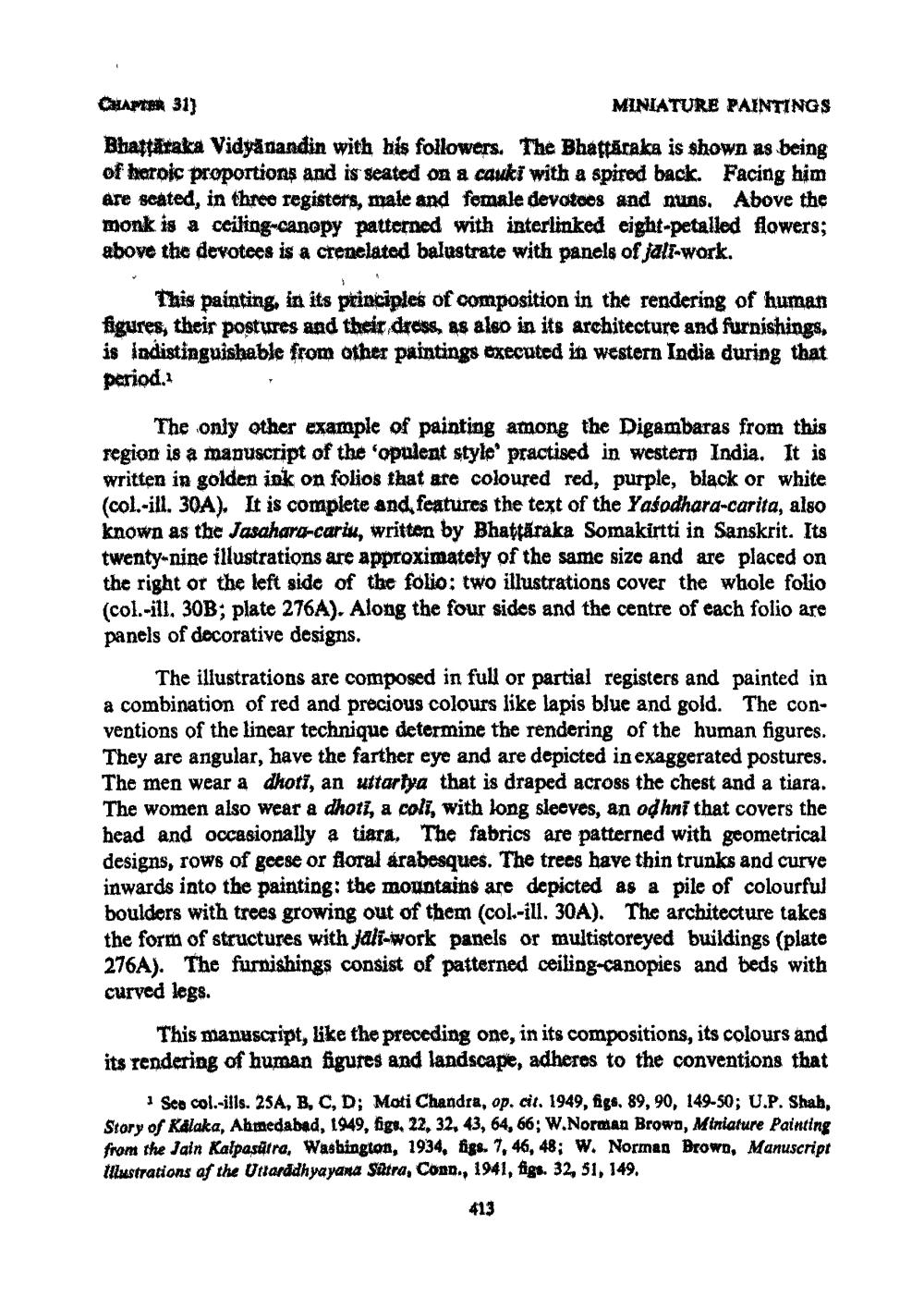________________
CHAPTER 31)
MINIATURE PAINTINGS
Bhattáraka Vidyanandin with his followers. The Bhattáraka is shown as being of heroic proportions and is seated on a cauki with a spired back. Facing him are seated, in three registers, male and female devotees and nuns. Above the monk is a ceiling-canopy patterned with interlinked eight-petalled flowers; above the devotees is a crenelated balustrate with panels of jali-work.
This painting, in its principles of composition in the rendering of human figures, their postures and their dress, as also in its architecture and furnishings, is indistinguishable from other paintings executed in western India during that period.1
The only other example of painting among the Digambaras from this region is a manuscript of the 'opulent style' practised in western India. It is written in golden ink on folios that are coloured red, purple, black or white (col. ill. 30A). It is complete and features the text of the Yasodhara-carita, also known as the Jasahara-cariu, written by Bhattāraka Somakirtti in Sanskrit. Its twenty-nine illustrations are approximately of the same size and are placed on the right or the left side of the folio: two illustrations cover the whole folio (col.-ill, 30B; plate 276A). Along the four sides and the centre of each folio are panels of decorative designs.
The illustrations are composed in full or partial registers and painted in a combination of red and precious colours like lapis blue and gold. The conventions of the linear technique determine the rendering of the human figures. They are angular, have the farther eye and are depicted in exaggerated postures. The men wear a dhoti, an uttartya that is draped across the chest and a tiara. The women also wear a dhoti, a coli, with long sleeves, an odhni that covers the head and occasionally a tiara. The fabrics are patterned with geometrical designs, rows of geese or floral árabesques. The trees have thin trunks and curve inwards into the painting: the mountains are depicted as a pile of colourful boulders with trees growing out of them (col-ill. 30A). The architecture takes the form of structures with jali-work panels or multistoreyed buildings (plate 276A). The furnishings consist of patterned ceiling-canopies and beds with curved legs.
This manuscript, like the preceding one, in its compositions, its colours and its rendering of human figures and landscape, adheres to the conventions that
Seo col.-ills. 25A, B, C, D; Moti Chandra, op. cit. 1949, figs. 89, 90, 149-50; U.P. Shah, Story of Kalaka, Ahmedabad, 1949, figs, 22, 32, 43, 64, 66; W.Norman Brown, Miniature Painting from the Jain Kalpasätra, Washington, 1934, figs. 7, 46, 48; W. Norman Brown, Manuscript Illustrations af the Uttarddhyayana Sutra, Conn., 1941, figs. 32, 51, 149.
413




